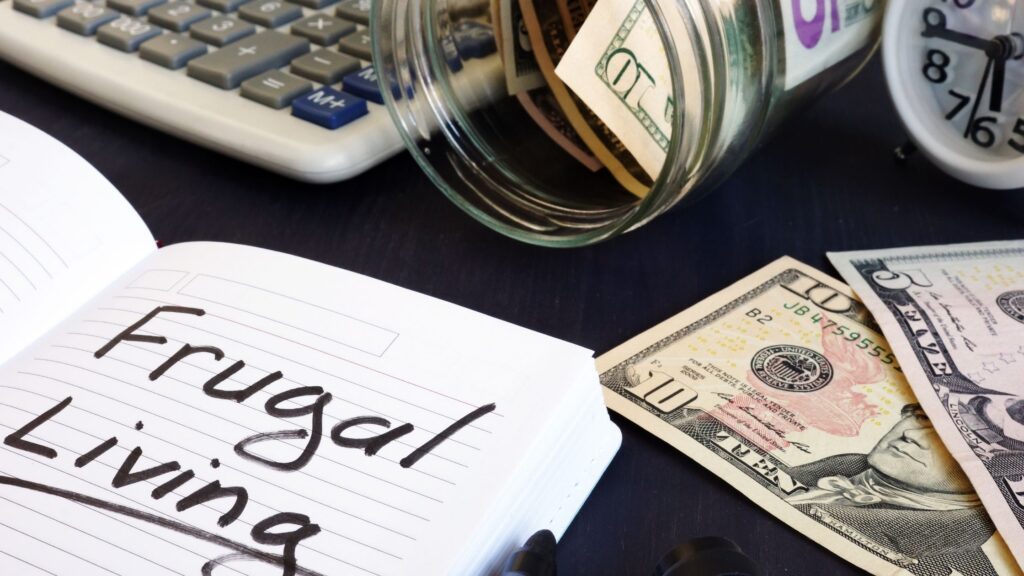Frugal living isn’t about restriction; it’s about intention. This guide shows you how to enjoy more of what you love while spending less, proving that smart living can still feel luxurious.
Ever catch yourself scrolling through weekend getaway deals? I’ve done this more times than I can count. But here’s the twist: frugal living doesn’t mean missing out. It means getting smarter with your money, not stingier. Think of it as your cheat code to enjoying life without the financial regrets later.
Disclaimer: This article contains affiliate links. I earn from qualifying purchases through these links at no additional cost to you.
Disclosure: I’m not a financial expert or a health professional. I don’t have a degree in finance, math, economics, or medicine. I’m just a gal who’s been there before. If you need professional advice, I recommend consulting an expert.
What Frugal Living Really Means
Frugal living isn’t about cutting every corner; it’s about cutting the right ones. It’s saying yes to experiences, quality, and peace of mind, and no to the waste that eats up your hard-earned cash. According to a 2025 WalletHub Budgeting Survey, more than 86% of people say they have a budget, and nearly three-quarters admit rising costs make it tough to stay on track. That’s proof that while having a budget pays off, you must use it, maintain it, adjust it, and pay close attention to it, versus what’s going on in your life and the world around you. Whenever things shift, your budget should change with them.
With the right budget, you can enjoy more and spend less when you know what truly adds value to your life.
- Know your priorities: Spend intentionally on what brings joy or comfort, not temporary satisfaction.
- Stay flexible: Life changes often, and so should your budget. Adjust frequently, not once a year.
- Celebrate small wins: Every $10 saved is a tiny victory toward your bigger goals.

The Frugal Shift Mindset
Frugality starts with attitude. I still remember when the kids were little (and before I took to frugal living), heading to the grocery store on a super tight budget and learning I’d blown it… at checkout. It’s embarrassing, and it made me feel like a failure. I’d start picking through the cart, deciding what to put back to make the final bill fit my budget.
Those moments stuck with me, left me frustrated and even in tears. And we won’t even talk about the one time I went Christmas shopping and had to return half of my kid’s gifts because the electric bill needed immediate attention to avoid losing power during a cold Maine December. The choice was this: Barbie Jeep or keeping the lights on. Those were the moments my mind shifted.
I used to think frugal living meant living on ramen, skipping coffee runs, going literally nowhere, and doing nothing because you couldn’t afford entertainment. Now, I see it as freedom to choose how and where to spend, without debt dictating every moment of my life.
Build a Budget You’ll Actually Use
Budgets get a bad rep because they sound restrictive. But when you craft one that fits you, it feels empowering and makes it easier to live frugally. Apps like WalletHub can help you visualize progress and even make budgeting weirdly satisfying. Some budget apps are free, while others cost money. Start with a free version. You can always upgrade later when you need more features and are in a better financial position to afford it.
Keep it fluid; think of your budget like sourdough — it needs regular care, not a stranglehold control. Your budget needs to be flexible because life is constantly changing.
Emergency Fund: Your Financial Comfort Blanket
Start small. A $1,000 emergency fund can soften life’s small punches, but don’t stop there. A $1,000 cushion is a great start, but when a crisis moment hits, it won’t last.
Over time, aim for 6–12 months of expenses, especially in today’s economy. I realize many people would say 3-6 is enough, but during uncertain times, a bit more can go a long way. And it’s not like you need to set that much aside in one lump sum. Tuck as much away as you can reasonably afford from each paycheck…even if that means $5. It all adds up over time.
According to Bankrate, over half of Americans can’t cover a $1,000 emergency. Once you have your ‘starter’ emergency fund, you’ll sleep better knowing you can.
How to Spend Less and Enjoy More
You don’t need to sacrifice joy to stay on budget. The secret is spending with intention, not impulse. Splurge occasionally, but only on things that truly upgrade your everyday life. Try these simple money hacks to make every dollar count.
- Buy better, not more: Choose items that last. Quality always trumps quantity.
- Master timing: Use price trackers or wait for seasonal sales. The patience pays off.
- Ditch impulse buys: Give yourself a 24-hour rule before checkout. Half the time, the urge fades.
Once you’ve got those basics down, it’s time to turn saving into something rewarding instead of restrictive. The next step is learning how to shop smarter, not harder, so your dollars stretch further effortlessly.
Shop Smart Like a Pro
Frugal living doesn’t mean you must dress frumpy, unless that’s your thing. Trust me, I’ve scored some of my favorite outfits and accessories secondhand, including a Tommy Hilfiger bag I scored for $25 at an online thrift shop. You can dress sharp, decorate beautifully, and still stay on budget.
Smart shopping is about strategy and satisfaction. It’s knowing where to look, what to skip, and when to wait for the right deal. The goal isn’t to chase discounts; it’s to make purchases that feel purposeful and guilt-free. Once you start shopping this way, saving money becomes a natural side effect of shopping with confidence.
Secondhand Secrets: Thrift sites like ThredUp and Poshmark offer luxury for less. The thrill of finding a $200 dress for $40, or that Tommy purse I bought? Unmatched.
Sale Strategy: Retail cycles are predictable. January and July are gold for clearance finds, so sign up for brand alerts and let deals come to you. I used to buy the kids new winter coats every late January because that’s when I could find $100 coats marked down to $20.
Learning to shop with patience and intention changes how you value what you buy. You stop settling for “good enough” and start investing in what truly adds joy or ease to your life. That’s when frugality shifts from saving pennies to shaping priorities, leading right into the best part, discovering the joy in simple pleasures.

The Joy of Simple Pleasures
Some of life’s best moments cost nothing. For me, it’s sipping coffee in the kitchen at sunrise. Sunrise coffee, a walk with your dog, a hike on a trail, laughter with friends or family, these are the moments that truly matter. When you strip away the clutter, it’s life’s little joys and experiences that are left. And that’s frugal living in its purest form.
Minor Upgrades That Feel Luxe
Minimalism is great! But not everything has to be minimal. Upgrade tiny habits instead:
- Swap single-use for reusable; it’s eco- and budget-friendly.
- Add fresh flowers or candles to your home for an instant mood lift.
- Cook one ‘fancy’ meal a week because treating yourself shouldn’t need an occasion.
Those little upgrades are proof that joy doesn’t have to come with a price tag.
When you start appreciating the simple things, you naturally spend less time chasing what doesn’t matter. That mindset sets you up perfectly for the next step: learning how to live well for less and truly enjoy the rewards of intentional living.
Ready to Live Well for Less?
Living frugally doesn’t mean going without; it means going wisely. Start where you are today, tweak as you go, and watch how quickly those wise choices add up. You’ll enjoy more, stress less, and still have money left for what matters most.
Living this way also builds confidence. The more you see progress, the easier it gets to manage your money. You’ll start spotting better deals, making smarter swaps, and focusing on what actually feels fulfilling. Every choice you make reflects your goals, not your limitations, and that’s where long-term freedom begins.
Subscribe and Stay Inspired. If this hit home, join the Frugal Hen community for weekly smart-living tips, money-saving hacks, and real-life stories that prove luxury doesn’t need a hefty price tag. Subscribe today — your future self will thank you.
Image Credit: © designer491 from Getty Images via Canva.com | © tomertu from Getty Images via Canva.com | © RDNE Stock project from Pexels via Canva.com
What to Read Next (Because You’re On a Roll)
- 7 Easy Steps to Financial Freedom This Year
- Smart Ways to Boost Your Emergency Fund Without the Stress
- 7 Best Ways to Make Money Online





